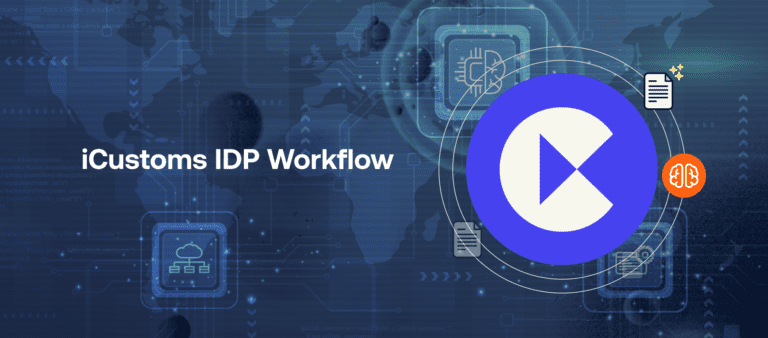Fast & Accurate ENS GB & EU ICS2 Solutions Built for You.
How to Avoid Common Mistakes in Commodity Code Classification
-
Freya Jane
- Director of Customer's Success
Have you ever experienced confusion regarding commodity codes? These seemingly random numbers play a significant role in international trade, influencing various aspects, including customs clearance and tariffs. However, with multiple potential challenges, it is quite easy to encounter errors.
This blog post will walk you through the common challenges in commodity code classification and how you can avoid them.
Understanding commodity code
Commodity codes, also referred to as harmonised system (HS) codes or tariff codes, are globally standardised reference codes used to classify importing and exporting goods.
These codes enable customs authorities to enforce trade compliance regulations and calculate accurate customs duties.
Every product (importing or exporting) is assigned a unique code that matches specific customs tariff numbers. This helps to make sure that goods are classified and treated consistently globally, no matter where you are!

UK Integrated Online Tariff
Best match Products Name or products description , you can select any of them to check and calculate duty rate, VAT rate and total landed cost.
- Searching...
This tariff information is for the UK only
Learn more about commodity code or HS codes for importers & exporters! Read out!
Common challenges in commodity code classification
Many businesses find it challenging to find out the accurate commodity code for the following reasons:
Complexity of goods
Some goods are difficult to classify because of their composition or usage complexities and variations in international regulations. It becomes challenging for the traders or brokers to understand and describe the product accurately.
Constant changes
Tariff codes and customs classifications can change with new trade agreements or regulations. This makes it a bit tricky for businesses to keep up, but staying informed can really help.
Incorrect determination of product’s characteristics
You must have complete information about your product’s description, characteristics, composition, and function before attempting to classify. There must be documents that explain its:
- Specifications (thickness, size)
- Compositions (wood, metal, plastic)
- Intended use
- Performance specifications (voltage, capacity, flow rates)
If you are unsure about any feature of your product, you may end up choosing the wrong commodity code.
Not providing accurate information to the customs broker
A minor difference in the product description can lead to a change in the commodity code. Although customs brokers or agents are knowledgeable professionals, they are still dependent on accurate information to establish the proper information.
Regularly review your products for updates and communicate these changes to your customs broker. To help them assign the correct HS Code, supply your customs broker with the following details:
- Raw materials and components of the product
- The intended purpose of the product
- Extra notes in the HS that are relevant to the product
What happens if you use the wrong commodity code?
Wrong commodity codes can lead to serious consequences, including:
Overpaying customs duties
Incorrect commodity code causes inaccurate computation of customs duties, which could result in overpaying.
If the proper HS code is not used, the customs authorities will likely put your product in the “Other” category for the purposes of customs duties and taxes. This category generally charges the maximum rates, significantly increasing the financial burden on the businesses.
Fines and penalties
If any incorrect commodity codes are found during or after the customs process, you may encounter penalties. Additionally, you could need to pay interest on any overdue payments, and in the most challenging situations, your goods might even be seized completely.
Customs delays
If an issue arises during the customs process, it may result in delays. These delays happen because all documentation must be correctly arranged prior to importing the goods.
Find your accurate HS code in seconds with iClassification. Start Now!
How do we avoid common mistakes in commodity codes?
Make sure to use the correct commodity codes by following these tips:
Thorough research
Commodity code classification systems may vary in different regions. Thus, it is recommended to conduct thorough research on the specific goods classification system being used and understand its regulatory requirements.
Know your product
Knowing your product completely is crucial to getting an accurate commodity code. Study the features, characteristics, and composition of the product in-depth and deliver the information correctly to the customs broker. Also, keep yourself updated on any changes in the information.
Get expert’s help
To get an accurate commodity code and avoid delays and penalties, it is recommended that this error-prone task be handed over to professionals.
In this regard, iCustoms is around the corner to assist you. Our customs experts ensure the accuracy of the commodity code regardless of the complexity of the product.
Verify information
When using customs brokerage services, make sure to double-check the accuracy of information provided in the customs declaration and supporting documents. Keep checking on the broker to ensure that your instructions are being followed.
Use classification tools
Online goods classification tools such as iCustoms’ AI-driven iClassification tool can assist in finding accurate commodity codes quickly and precisely. Investing in our innovative tool can save you plenty of time and resources, improving your overall trading journey.
Bottom line
Finding the accurate commodity code can be difficult, particularly for complicated products. However, by following these steps discussed in this blog, you can reduce risks, prevent unnecessary expenses, and guarantee proper classification of your goods each time. Accurately assigning your commodity codes is essential for compliance and can greatly influence your profitability.
Reach out to iCustoms to classify your goods precisely and effortlessly!

Get accurate HS codes in seconds with iCustoms!
Simplify customs clearance and ensure compliance.
You may also like
Streamline Product Classification
Uncover iClassification for precise Global Trade, Delivering Time-Saving Accuracy.
Subscribe to our Newsletter
About iCustoms
Streamline Product Classification
Uncover iClassification for precise Global Trade, Delivering Time-Saving Accuracy.
